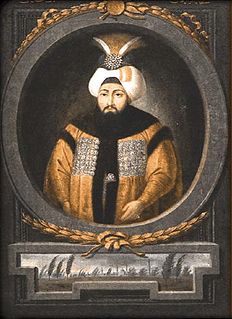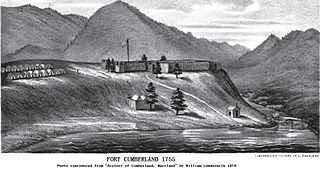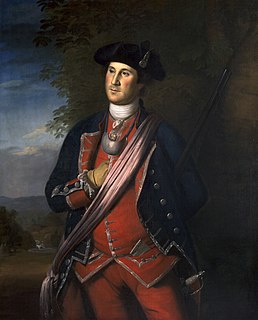This article relies largely or entirely on a single source .(November 2022) |
This article relies largely or entirely on a single source .(November 2022) |
The theatrical year began 22 April 1754 (the day before Palm) and ended 22 March 1755.
| Director : | |
| Actors | Actresses |
|---|---|
| Le Grand | La Motte |
| de La Thorillière | Dangeville |
| Armand | Gaussin |
| Du Breuil | Grandval |
| Sarrazin | Dumesnil |
| Grandval | Lavoy |
| Dangeville | Drouin |
| Dubois | Clairon |
| Baron | Beauménard |
| Bonneval | Brillant |
| de La Noue | Hus |
| Paulin | |
| Drouin | |
| Lekain | |
| Bellecour | |
| Préville | |
| Dancers | Female dancers |
| Dourdet, master of ballet | Gaurion |
| Giraud, master of music | Martigny |
| de Launay, répétiteur | Rosaly |
| La Rivière | Frédéric 1 |
| Bajofrois | Frédéric 2 |
| Gougy | Riquette |
| Feuillard | Le Clerc |
| Guingret | Chauvin |
| Gaurion | Guillot |
| Duval | |
| Hus-Malo | |
| Orchestra | |
| Dupré | Perrin |
| Branche | Chabrun |
| Piset | Chartier |
| Blondeau | Madrou, flute |
| Other | |
| Rebut, janitor | Grangé, prompter |
| Louis Debray, decorator | Le Tellier, doorman |
| De Romancan, cashier | Mlle Langlois, doorwoman |
| Mme Dauvilliers, receiver | Miel, doorman |
| M. de Laplante, receiver | Mlle Tairot, receiver at the theatre |
| Gond, controller | Mlle La Roche, receiver at the amphitheatre |

Osman III was the Sultan of the Ottoman Empire from 1754 to 1757.

Events from the year 1754 in Canada.

Robert Dinwiddie was a British colonial administrator who served as lieutenant governor of colonial Virginia from 1751 to 1758, first under Governor Willem Anne van Keppel, 2nd Earl of Albemarle, and then, from July 1756 to January 1758, as deputy for John Campbell, 4th Earl of Loudoun. Since the governors at that time were largely absentee, he was the de facto head of the colony for much of the time. Dinwiddie is credited for starting the military career of George Washington.

Fort Cumberland was an 18th-century frontier fort at the current site of Cumberland, Maryland, USA. It was an important military and economic center during the French and Indian War (1754–63) and figured significantly in the early career of George Washington.

General Peregrine Bertie, 3rd Duke of Ancaster and Kesteven, styled Lord Willoughby de Eresby from 1715 to 1723 and Marquess of Lindsey from 1735 to 1742, was the son of Peregrine Bertie, 2nd Duke of Ancaster and Kesteven.
William Plumsted was the mayor of Philadelphia in 1750, 1754, and 1755.

Henry Nevill, 2nd Earl of Abergavenny KT MA was a British peer, styled Hon. Henry Nevill until 1784 and Viscount Nevill from 1784 to 1785.

The Virginia Regiment was formed in 1754 by Virginia's Royal Governor Robert Dinwiddie, as a provincial corps. The regiment served in the French and Indian War, with members participating in actions at Jumonville Glen and Fort Necessity in 1754, the Braddock expedition in 1755, and the Forbes expedition in 1758. Small detachments of the regiment were involved in numerous minor actions along Virginia's extensive wilderness frontier.
The decade of the 1750s in archaeology involved some significant events.

The military of New France consisted of a mix of regular soldiers from the French Army and French Navy supported by small local volunteer militia units. Most early troops were sent from France, but localization after the growth of the colony meant that, by the 1690s, many were volunteers from the settlers of New France, and by the 1750s most troops were descendants of the original French inhabitants. Additionally, many of the early troops and officers who were born in France remained in the colony after their service ended, contributing to generational service and a military elite. The French built a series of forts from Newfoundland to Louisiana and others captured from the British during the 1600s to the late 1700s. Some were a mix of military posts and trading forts.

HMS Dunkirk was a 60-gun fourth-rate ship of the line of the Royal Navy, built by Edward Allin at Woolwich Dockyard to the draught specified by the 1745 Establishment as amended in 1750, and launched on 22 July 1754.

Sir Robert Grosvenor, 6th Baronet of Eaton Hall, Cheshire, was an English politician who sat in the House of Commons from 1733 to 1755. He was an ancestor of the present Dukes of Westminster.
Giovanni Maria Morlaiter was an Italian sculptor of the Rococo or late-Baroque, active mainly in his native Venice.

William Hay (1695–1755), of Glyndebourne, Sussex was an English writer and Whig politician who sat in the House of Commons from 1734 to 1755.

Events from the year 1826 in Sweden
The Real Astillero de Esteiro was a royal shipyard in Ferrol in Spain. Orders for its construction were issued by Ferdinand VI of Spain on 9 April 1749, following the decision by the naval minister Zenón de Somodevilla, 1st Marqués de la Ensenada, to build new naval fortifications and installations in Ferrol and its surrounding area. Initial construction was managed by Cosme Álvarez, Comandante General of the Department. It was sited on the northwest slope of the monte Esteiro near Ferrol. It was initially planned to have four levels, but by the end this rose to twelve, proportional to the mountain's slope. Barracks, workshops and warehouses were also built.